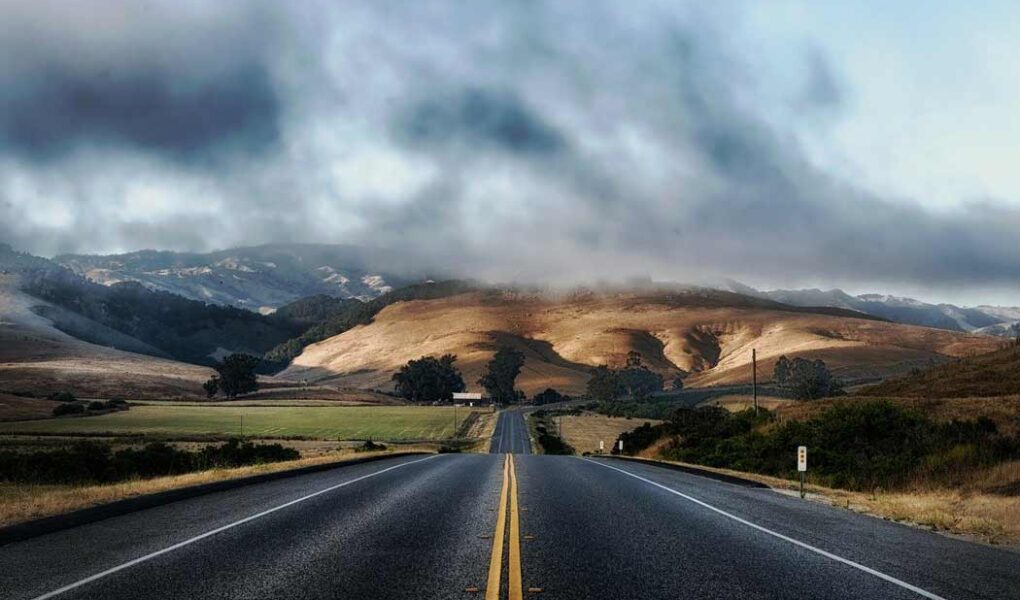If you’re a nervous parent of a teenager who has just earned a driving license, it’s a good bet that your stress levels escalate when your teen gets behind the wheel during inclement weather. Driving in foggy conditions and heavy downpours can be scary for someone unsure of the best practices for maneuvering safely on roads and highways.
Prepare your son or daughter to drive defensively during bad weather by using these Driving Tips For Teen Drivers offered by the founder of the popular Zutobi app. The Zutobi mobile app helps teens learn driving theory and pass the learners’ test.
Pay Attention to Driving
Statistics show that when young drivers are involved in car crashes, it’s because they make critical errors like:
- Becoming distracted by the goings-on in the vehicle instead of keeping their eyes on the road
- Not knowing how to judge the distance between cars and how long it takes to stop
In wet and foggy conditions, it’s even more important to keep your focus on the road and the other cars. Fog and rain can make it harder to see, navigate, and control the vehicle. Besides using the windshield wipers to improve visibility, turning on the vehicle’s defroster will help clear the high humidity that accompanies fog. Your teen will then find it easier to see the white lights of oncoming traffic.
Tell your teen not to try to wipe the inside windows to see more clearly. Wiping the windows makes things worse because it produces smears. It’s also a distraction that keeps you from paying attention to what’s happening on the road.
Note that keeping your eyes on the road means looking beyond what’s directly in front of you. Make sure your teen prepares for what’s ahead by scanning approximately half a kilometer in the distance.
Increase Following Distance
Rain and fog can make it difficult to see beyond your windshield and get a feel for what’s going on around your vehicle. Drivers might be tempted to accelerate their speed to be able to see the tail lights of the car in front of them. But that could be a dangerous move.
Stay far enough away from the car ahead of you so that if you need to stop suddenly, you won’t read-end the vehicle. Following too closely poses problems even when the weather is clear because it’s often hard to gauge how much time you’ll need to stop. Road conditions during rainfall or storms make stopping even more complicated. One read-end accident could lead to a chain reaction.
A good rule of thumb for following during bad weather is to allow at least five seconds between your car and the car in front of you. Here’s how you can figure out if you’re driving at a proper distance (do this practice exercise during good weather):
- While driving, choose a roadside marker, like a sign or a tree
- Note when the car in front of you passes the marker
- After the vehicle in front passes the marker, count how many seconds it takes for you also to pass it.
New drivers should count three seconds between their car and the car in front during good weather and five or more seconds during inclement weather.
Also Read, 7 Places to Put on Your Travel Bucket List
Slow Down But Try to Keep Up with the Flow of Traffic

Of course, it makes sense to decrease your speed during periods of poor visibility and wet conditions. But don’t drive much slower than the other cars on the road. When you try below the posted speed limit, cars will attempt to pass you – a hazardous maneuver during bad weather.
You’ll help keep all the other drivers and passengers safe if you avoid causing a major disruption in the traffic flow. Plus, as mentioned earlier, try not to stop suddenly, even though it may be your impulse to do so when you encounter dense fog or an unexpected downpour.
Learn How to Avoid Hydroplaning
It’s a wise idea to make sure your vehicle is in good working condition before you set off on any road trip. Keep your tires inflated to the proper pressure and inspect them often to ensure the treads are in decent shape. Tire tread is responsible for moving rainwater and snow away from your tires, so have your tires inspected and rotated regularly.
Other ways to avoid hydroplaning include driving at a safe speed and avoiding sudden acceleration. Also, don’t use your cruise control. When you activate cruise control, you tend to pay less attention to how fast you’re driving, and your speed should be top of mind during heavy rains, heavy fog, or icy conditions. And if you do encounter large puddles of standing water, move around them if possible.
It’s still possible that your vehicle will hydroplane, despite your best efforts to avoid it. Here’s how to handle hydroplaning if it happens:
- Don’t panic. You’ll need to keep your head and think clearly. Remind yourself that the incident won’t last long.
- Don’t slam on the breaks. That will cause your car to spin and swerve out of control.
- For front-wheel drive vehicles with an antilock brake system and traction control, you’ll need some distance to get control of the car. Put light pressure on the accelerator and steer carefully toward an open space or to the side of the road.
- If your vehicle is rear-wheel drive without anti-lock brakes or traction control, slowly ease off the accelerator as you move toward an opening and work to get control of the vehicle
Hydroplaning can be frightening, but knowing how to manage it will help your teen remain calm.
Learn Which Lights to Use and When
It’s not always true that more light will make it easier to see road conditions. Learn which of your car’s lights to use during periods of low visibility.
Fog Lights
Use fog lights in addition to your vehicle’s headlights. Since fog tends to settle close to the ground, fog lights help by shining their flat, wide beams downward to light up the road beneath the mist. Visibility improves because the beams don’t hit the fog directly and reflect off of it. Fog lights are also helpful when it rains and snows, even if there isn’t any accompanying fog. They provide an excellent way to cut down on glare.
Low-Beam Headlights
On a poorly lit road during clear nighttime conditions, high-beam lights will make it easier to see where you’re going. That’s not the case when it’s foggy, snowing, or raining heavily because the precipitation will reflect the light’s particles and cause glare. High-beam lights also make it more difficult for other drivers to see your vehicle. Just use your regular low-beam headlights in addition to your fog lights when wet weather conditions cause poor visibility.
If You Need to Stop, Move to a Safe Location
Sometimes it’s best to pull over and wait out the storm if navigating and controlling your car is too challenging. However, try to move off the road or highway and into a safe place like a parking lot. Stopping on the side of the road or the shoulder can be very dangerous. Other vehicles are still moving quite fast – and in conditions that make it difficult for them to see you.
If you have no choice but to pull over to the side of the road or highway shoulder, you’ll be safer if you’ve prepared for an emergency. These tips can protect you whenever you need to pull off to the side or shoulder:
- Stow emergency cones or reflectors in your car, and have a poncho or raincoat stored in your vehicle. You will need to exit the car to place the reflectors or cones – and you’ll want to wait for help outside of your vehicle and away from the road. You’ll need that poncho to provide cover during a heavy storm.
- After pulling over, turn on your hazard lights, and then carefully exit the vehicle. Then, place the emergency cones or reflectors around your car. Cones or reflectors will signal to other drivers that they should steer clear of your location.
- If you are having car problems, call a tow truck immediately.
If You Can Avoid the Trip, Don’t Take It
Don’t plan to drive during dangerous weather conditions. Ask yourself if travel is essential and if you can postpone the trip. If you don’t feel comfortable driving, don’t risk it. Defensive driving in bad weather requires skill and experience, and teen drivers generally have neither.
If you absolutely must take the trip, plan to leave much earlier than you would during normal weather conditions. Check weather maps to see when the worst part of the storm is expected to hit and use a GPS to direct you to alternative routes when accidents or road flooding occurs.
A Driving Theory Refresher Course Can Benefit Your Teen
There’s so much to remember about driving theory. It’s likely that your teen doesn’t have all the information top of mind – even if he or she passed the test and earned a license. Zutobi offers a refresher course, which may be an excellent reference tool for new drivers to review periodically. The app contains many helpful guides for driving responsibly and safely. Plus, its gamified approach to learning is an effective way for students to absorb the material. Teens will become better drivers when they know the road rules and feel confident that they can handle common driving challenges.
Author: Tim Waldenback
Tim Waldenback is the co-founder of Zutobi Drivers Ed, a gamified e-learning platform focused on online drivers education to help teens get their licenses. Tim founded Zutobi to make world-class driver’s education fun, affordable, and easily accessible for all.



